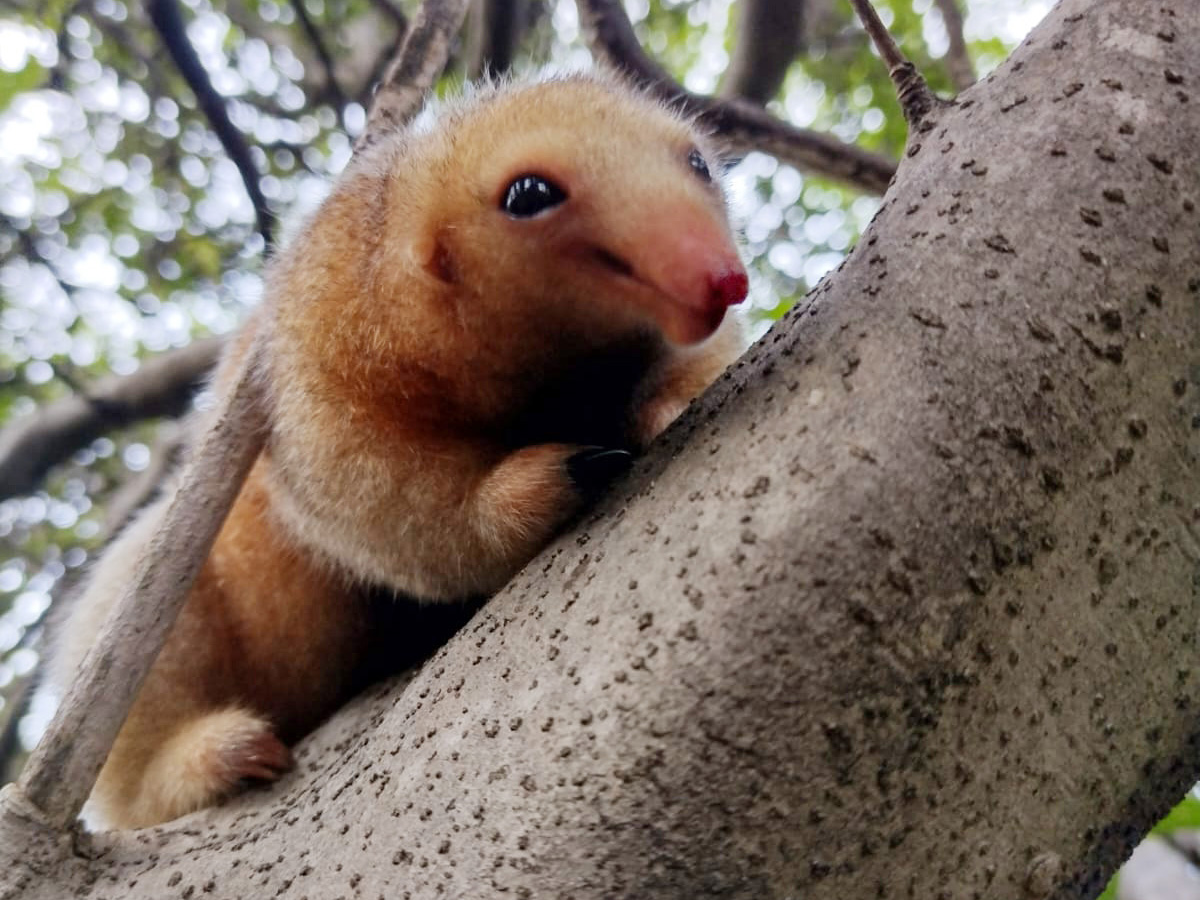This Fluffy Little Anteater May Be a New Species
The animals eke out a living in a pocket of mangroves on Brazil’s Atlantic coast
James Hall, Hakai
October 10, 2023 8:00 a.m.

A silky anteater, small enough to sit comfortably in your palm, rests in the canopy of a mangrove forest in Brazil’s Parnaíba Delta. João Marcos Rosa
Hiking through dense vegetation in Brazil’s Parnaíba Delta, Flávia Miranda stops suddenly and plucks a wheat-colored ball of fur from the tangle of mangrove branches. Startled from its slumber, the tennis ball-sized silky anteater raises its forepaws defensively like a boxer. Miranda, a researcher in conservation medicine at the State University of Santa Cruz in Brazil, carefully takes samples of blood and fur, then releases the elusive animal back into the forest.
Silky anteaters are the smallest anteaters and were the first to evolve, between 30 million and 40 million years ago. Largely solitary and nocturnal, these fluffy little canopy dwellers inhabit low-altitude rainforests and mangroves from southern Mexico to northern Bolivia. When they’re not gorging on ants and termites, they spend much of their two-year life span sleeping.
Until recently, scientists believed that all silky anteaters belonged to the same species. But in 2017, Miranda and colleagues published an analysis of silky anteater DNA from across the Americas, revealing seven distinct species.
“I always had this feeling that there was more than one species,” says Miranda, who has studied Brazil’s sloths, anteaters and armadillos for 30 years. “I’d noticed differences in the fur color of populations in different regions.”
Now, Miranda is investigating the possibility that the sleepy animal she sampled in the Parnaíba Delta, roughly 175 miles east of the northeastern Brazilian city of São Luís, is a member of an eighth species.
. . .

More:
https://www.smithsonianmag.com/science-nature/this-fluffy-little-anteater-may-be-a-new-species-180983020/

Just come at me, bro!

Silky anteater from Peru



